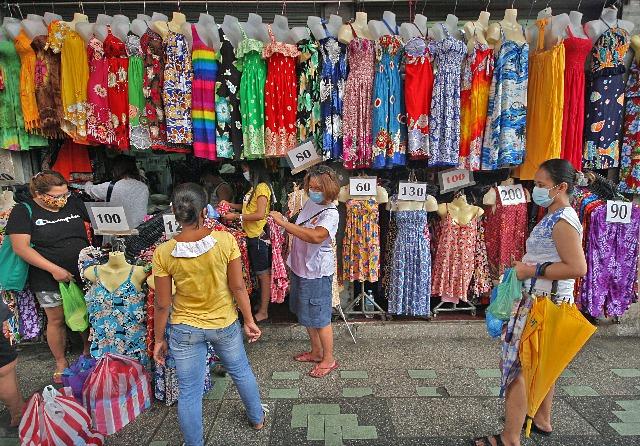Philippine economic slump continues in Q4, drags 2020 GDP to record low

The Philippine economic slump continued in the last three months of 2020, dragging the full-year gross domestic product (GDP) to its worst performance on record based on available data, on the back of the coronavirus disease 2019 (COVID-19) pandemic.
The Philippine Statistics Authority (PSA) on Thursday reported the fourth-quarter 2020 GDP at -8.3%. This follows the -11.4% in the third quarter of the year, and a reversal of the 6.7% growth recorded in the fourth quarter of 2019.
At a virtual briefing, National Statistician Claire Dennis Mapa attributed the contraction to the drop in the performance of construction (-25.3%), other services (-45.2%), and accommodation and food service activities (-42.7%).
All three major economic sectors likewise posted contractions during the quarter -- agriculture by 2.5%, services by 8.4%, and industry by 9.9%.
"COVID-19 disrupted our growth momentum and development trajectory," Acting Socioeconomic Planning Secretary Karl Kendrick Chua said in the same briefing, as he noted the implementation of the community quarantines.
The Philippines first implemented the enhanced community quarantine (ECQ) in March 2020, which has been gradually eased to the general community quarantine (GCQ) currently in place in Metro Manila.
"This government made a difficult decision of imposing community quarantines as it put a premium on saving lives and protecting communities," Chua said.
"While beefing up our health capacity, this is not without consequence. Like any policy decision that comes with trade-offs, this one came at a huge cost to the economy and the people," he added.
The latest figures brought the 2020 GDP to -9.5%, the first full-year contraction since 1998 when the economy contracted by 0.5% due to the Asian financial crisis.
This is also the worst full-year performance based on available data from the PSA dating back to 1947, following the 7% slump in 1984.
In terms of per capita, the GDP fell to -10.7% in 2020 versus 4.5% in 2019, while the gross national income (GNI) dropped to -12.3% from 3.7% the previous year.
In December, the economic cluster, through the Development Budget Coordination Committee (DBCC), said it expected the GDP at -8.5% to -9.5% for the full-year 2020, before rebounding to the 6.5% to 7.5% range this 2021, and 8% to 10% in 2022.
"The prospects for 2021 are encouraging. With the continuous calibrated reopening of businesses and mass transportation and the relaxation of age group restrictions, we will see more economic activity in the months ahead," said Chua.
"This will lead to a strong recovery before the end of the year when the government will have rolled out enough vaccines against COVID-19 for a majority of our people," he added.
The Philippines has allocated some P73 billion for the procurement of the vaccines, as the DOF earlier said the amount includes P40 billion coming from multilateral agencies, P20 billion from domestic sources, and P13.2 billion from bilateral agreements.
COVID-19 policy chief implementer and vaccine czar Carlito Galvez Jr. earlier said the Philippines targets to vaccinate some 50 to 70 million Filipinos from COVID-19 this year.
Galvez Jr. this month also inked a term sheet to secure some 30 million doses of the COVID-19 vaccine Covovax, set to arrive in the country by the third quarter of 2021.
Health Secretary Francisco Duque III also said the country has secured some 25 million doses of the vaccine manufactured by Chinese firm Sinovac, even as the medicine has less efficacy and more expensive than others. The first batch is scheduled to arrive in February.
Amid questions over its seeming "preference" for Sinovac, the government said that it does not favor any company and that the Sinovac vaccine is safe.
Meanwhile, the private sector has committed to procuring as much as 6 million doses of COVID-19 vaccines from British pharmaceutical firm AstraZeneca, half of which will be donated to the Philippine government. — KBK/RSJ, GMA News




